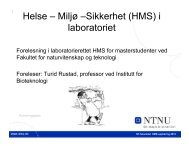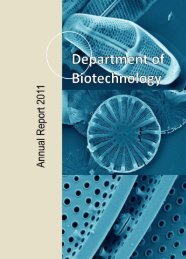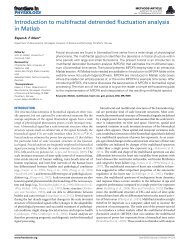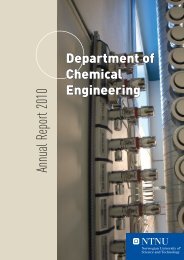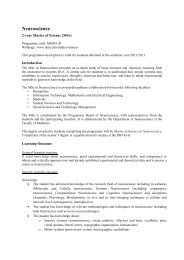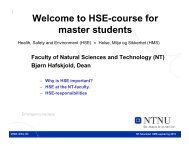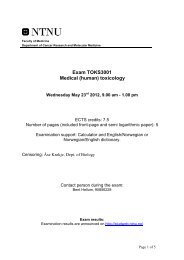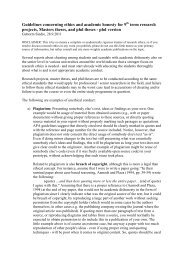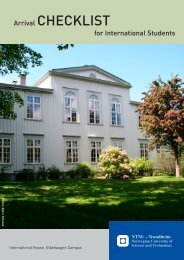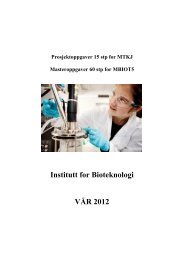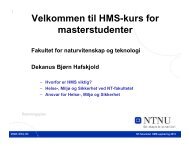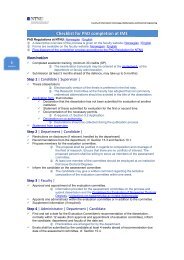Annual Report 2011 - NTNU
Annual Report 2011 - NTNU
Annual Report 2011 - NTNU
Create successful ePaper yourself
Turn your PDF publications into a flip-book with our unique Google optimized e-Paper software.
JULY—OCTOBER <strong>2011</strong><br />
<strong>NTNU</strong> GLOBAL<br />
PAGE 5<br />
Continues……...<br />
Project seminar Transformation and friction in globalizing India was<br />
held on 5th October at Dragvoll Campus. Six researchers including<br />
key Indian research partners presented the results of<br />
the sub-projects affiliated with the umbrella project, which is<br />
financed by the Research Council of Norway. .<br />
Professor Emeritus Amit Bhaduri (Council for Social Development,<br />
New Delhi) presenting on Extraction of Natural Resources<br />
and Patterns of Industrialization. Environmental Insecurity and Social<br />
Friction: Case of Rural Odisha was the subject of the talk given by<br />
Professor Haribandu Panda (Human Development Foundation,<br />
Orissa), who identified several impacts of land degradation<br />
due to the rapid development of India. For example, in<br />
Koenjhal District, >60% of the people resided in areas surrounding<br />
highly polluting mining activity. He also gave examples<br />
of lost livelihood due to mining, the loss of natural springs<br />
(4 major springs) damaged/affected due to on-going mining,<br />
and suggested that the annual income of more than 40% of the<br />
farmers was reduced significantly, and that rapid changes have<br />
led to 35% of the traditional healer leaving their practice. Apparently,<br />
mining activity has led to high instance of respiratory<br />
& skin disease.<br />
Presenting results of the sub-project, Migration Flows, Labour<br />
Market Policies, and Social Friction Associate Professor Moushumi<br />
Basu (Jawaharlal Nehru University, New Delhi) showed how<br />
rural poor migrant workers are exploited in different “informal<br />
and unorganized ” sectors in urban India, primarily in Delhi.<br />
Dr. D. Suba Chandran (Institute of Peace and Conflict Studies,<br />
New Delhi) presented different Motivations and Organization<br />
of Naxalite Violence in India while Associate Professor Jan<br />
Ketil Rød (Department of Geography, <strong>NTNU</strong>) presented maps<br />
that have been generated using data gathered for research in the<br />
program. The maps showed a high correlation between mining<br />
activity and the incidence of Naxalite violence, an issue that will<br />
be closely researched by the team in the coming months. Finally,<br />
PhD fellow from Heidelberg University Krishna Vadlamannati,<br />
presented his research on what do we know and don't know<br />
about the spread and organization of Naxalite violence.<br />
Professor Jonathon Moses (Department of Sociology and Political<br />
Science) chaired the seminar.<br />
Map of Orissa: Relationship between the percentage of tribal people<br />
and scheduled cast people living in the area and the number of violent<br />
incidents.<br />
Over: From left Dr. Suba Chandran, Professor Haribandhu Panda<br />
Below: Professor Amit Bhaduri and PhD fellow Krishna<br />
Vadlamannati<br />
Moushumi Basu presenting the working conditions of informal workers in gold industry (left) and almond shelling industry (middle)



